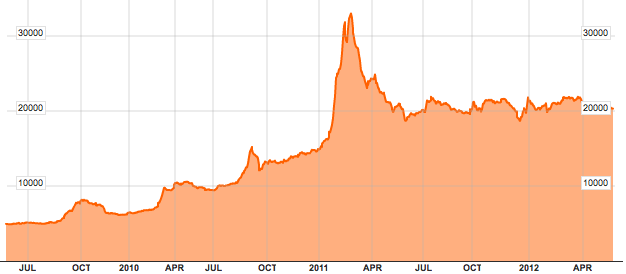I began by asking him for an overview of the Fund.
SB - The fund in its present form is quite new, having been up until recently a managed account on behalf of the owners of LGT, the Prince of Liechtenstein. Nevertheless, even in that short period of time, we have managed to outperform most of our peers. Myself and colleague, Peter Sigg, run an actively managed
portfolio which is different to many other 'commodity' funds which at first glance people may view as similar.
We trade contracts, as opposed to the buying the physical commodity or owning associated equities linked to that commodity.
Our investable universe continues to grow as new markets and commodities become more institutionalised and liquid, and we expect this to continue as emerging markets take more of a share of the global economy. This increases the demand for most commodities especially raw materials and agriculturals.
AVC - What are the reasons for the outperformance of the fund?
SB - We focus on three areas, one is curve positioning. For example, there is massive potential for outperformance if you compare the UBS Energy Index values (basically a proxy of the spot price) to the same Index but for 3 month forwards. The disparity is caused in some part by the mechanical roll-over of the ETF's and other instruments who use the spot price. We can usually take advantage of these 'passive' investments.
The second area we focus on is through relative value trades. A good example of this is the correlation between soyabeans and corn, whereby if corn is cheaper at the beginning of the year then spring planting may favour soyabeans leading to lower corn production and thus stronger corn prices. And vice versa.
Our outperformance compared to the Index can be explained by the two reasons above as well as the third reason which is strategic asset allocation, which is solely down to the expertise of the team I have around me.
These three factors have contributed evenly to the outperformance.
AVC - Where do you see short-term opportunities which you can exploit to continue the outperformance?
SB - Well, we have been pretty defensive in the last few months as the commodity markets focus on macro-economic pressures.
However we see opportunities, extra to the above, existing in things like diesel oil, and in relative trades we are short gold and prefer silver so we hold a long position in that, as it appears silver is undervalued according to historical data.

































